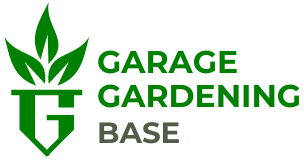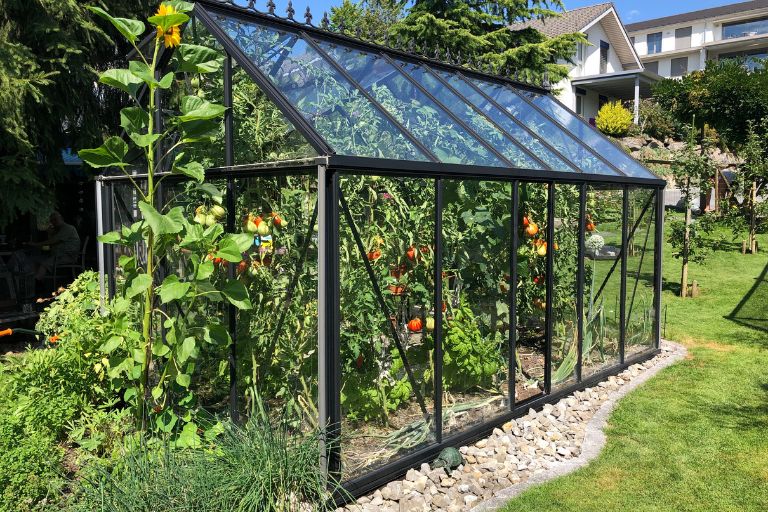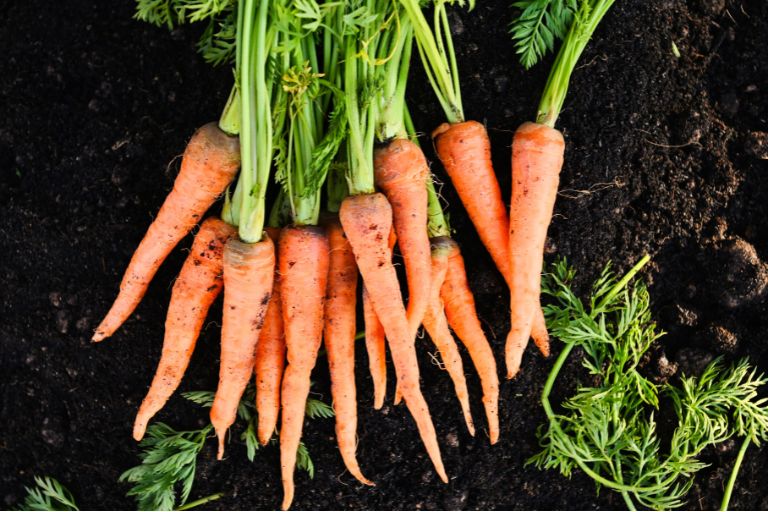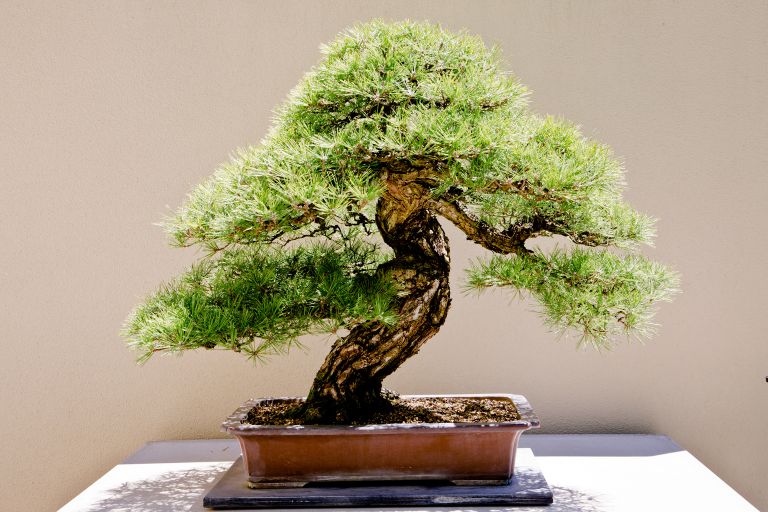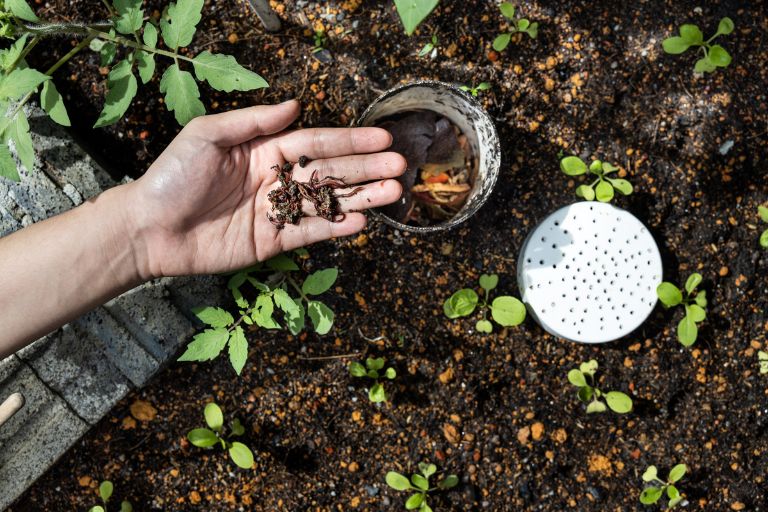10 Essential Tips for Successful Garage Gardening
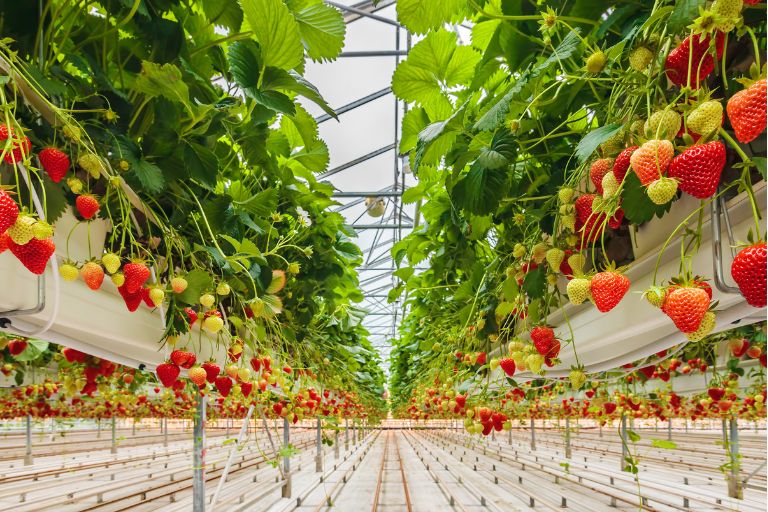
Garage gardening is the practice of growing plants, herbs, vegetables or flowers within the confines of a garage or other enclosed space. This innovative approach to gardening maximises the use of available space, making it ideal for city dwellers, apartment dwellers or those with limited outdoor space.
One of the key benefits of garage gardening is the ability to maximise space, allowing you to grow a wide variety of plants in a confined area. In addition, the controlled environment of a garage provides protection from external elements such as extreme weather, pests and wildlife, allowing gardening to continue throughout the year regardless of outdoor conditions.
Garage gardening also offers improved accessibility, making it easier for people with mobility issues or physical limitations to engage in gardening activities. With careful planning and the right tools, garage gardening can be a rewarding and productive endeavour, offering fresh produce, herbs and flowers at your fingertips, even in the most confined spaces.
Start with the Basics
Choosing the right containers, soil and seeds is vital to the success of garage gardening. Each element plays a crucial role in providing the necessary support, nutrients and growing conditions for plants to thrive in the confined space of a garage.
First and foremost is the choice of containers. Choosing containers that are appropriately sized, durable and have good drainage is key. Containers can vary in material, with options including plastic, ceramic or fabric pots. Plastic pots are lightweight and affordable, while ceramic pots offer aesthetic appeal and durability. Fabric pots, on the other hand, provide excellent aeration and drainage for plant roots. Hanging baskets are another popular choice for garage gardening, as they make efficient use of vertical space and add visual interest to the surroundings.
Vertical gardening systems are particularly beneficial for garage gardening, allowing you to maximise space by growing plants vertically along walls or suspended from ceilings. These systems typically consist of shelves, trellises or modular containers that can be stacked or arranged in tiers. Vertical gardening not only increases planting area, but also improves accessibility and aesthetics within the garage.
It is equally important to choose the right soil or growing medium for container gardening. A good quality potting mix formulated specifically for container plants is recommended as it will provide adequate drainage, aeration and nutrient retention. Avoid using garden soil as it can become compacted in containers and inhibit root growth. Consider adding organic matter or compost to enrich the soil and promote healthy plant growth.
When selecting seeds or seedlings for garage gardening, choose varieties that are well suited to indoor growing conditions. Look for compact or dwarf varieties of vegetables, herbs and flowers that thrive in containers and require minimal space. Consider factors such as light requirements, temperature tolerance and growth habits when making your selection. Choosing hybrid or disease-resistant varieties can also help reduce the potential challenges of indoor gardening.
Optimise Lighting
Adequate lighting is vital to the success of plants grown in a garage environment due to limited access to natural sunlight. Light is the primary source of energy for plants through the process of photosynthesis, which is essential for their growth, development and overall health. Insufficient light can result in stunted growth, weak stems, pale leaves and poor flowering or fruiting.
In a garage environment, where natural light may be limited or inconsistent, artificial lighting is essential to provide plants with the necessary light spectrum and intensity. LED grow lights and fluorescent bulbs are two popular options for supplemental lighting in garage gardens.
LED grow lights have gained popularity in recent years due to their energy efficiency, long life and ability to emit specific wavelengths of light optimised for plant growth. LED lights can be customised to provide the ideal spectrum of light for different stages of plant growth, from seedling to flowering. They produce less heat than traditional lighting options, reducing the risk of plants overheating in the confined space of a garage.
Fluorescent bulbs, particularly T5 or T8 fluorescent bulbs, are another viable option for garage gardening. These bulbs emit a balanced spectrum of light that closely mimics natural sunlight, making them suitable for promoting healthy plant growth. Fluorescent bulbs are usually more affordable than LED grow lights and are available in different lengths to suit different garden sizes.
When positioning lights in a garage garden, it’s important to ensure that the light is evenly distributed over all the plants. Hanging luminaires from adjustable brackets or placing them on shelves or racks can help achieve even coverage. Position the lights close enough to the plants to provide sufficient intensity without causing heat stress or burns. As a general rule, LED grow lights should be placed 6-12 inches above the plant canopy, while fluorescent bulbs may require closer placement due to their lower intensity.
In addition, consider rotating plants regularly to expose them evenly to the light source and prevent uneven growth. Monitor light levels using a light meter or by observing plant responses and adjust the positioning or duration of lighting as necessary to meet the specific requirements of different plant species.
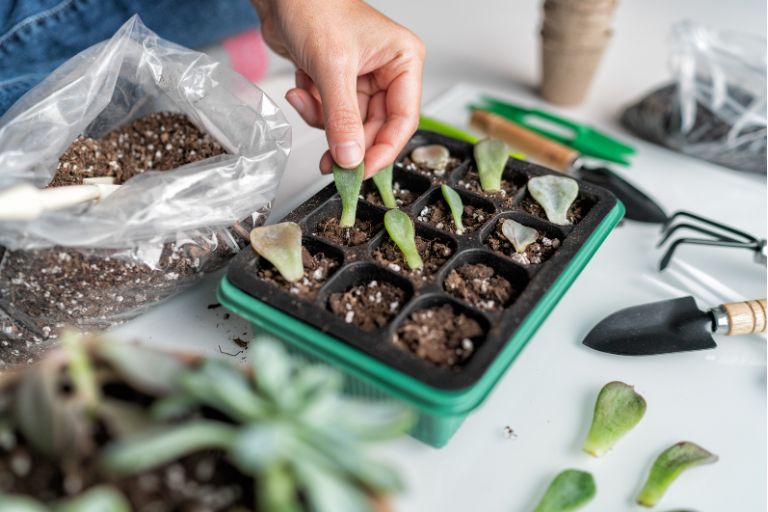
Maintain Proper Ventilation
Ventilation plays a critical role in garage gardening, helping to prevent the build-up of moisture, mould, mildew and stagnant air, all of which can be detrimental to plant health and overall gardening success. Without proper airflow, the enclosed environment of a garage can become a breeding ground for fungal diseases and pests, leading to plant stress, poor growth and even crop failure.
Mould and mildew thrive in damp and poorly ventilated environments and pose a significant risk to plants. These fungal pathogens not only damage plant tissue, but also inhibit photosynthesis and nutrient uptake, ultimately compromising plant health. Stagnant air exacerbates these problems by allowing airborne pathogens and pests to multiply unchecked, further threatening plant health.
By ensuring proper ventilation, you can mitigate these risks and create a healthier growing environment for their plants. Adequate airflow helps regulate humidity levels by removing excess moisture from the air, reducing the likelihood of mould and mildew. It also promotes gas exchange, allowing plants to absorb carbon dioxide and release oxygen more efficiently, which is essential for photosynthesis.
There are several methods you can use to ensure adequate airflow in their garage gardens. One simple approach is to use fans or ventilation systems to circulate air throughout the room. Ceiling fans, oscillating fans or box fans strategically placed around the garage can help promote air movement and prevent stagnant pockets of air from forming. Fans can also help distribute heat evenly, preventing temperature swings that can stress plants.
Another effective method is to open windows or doors, weather permitting, to allow fresh air into the garage and facilitate natural ventilation. Cross ventilation, achieved by opening windows or doors on opposite sides of the garage, can create a steady flow of air, promoting better air quality and reducing the risk of mould and mildew growth.
In addition to fans and natural ventilation, you can also consider installing vents or exhaust fans in the garage to facilitate airflow. Vents can be installed in walls, ceilings or doors to allow air to move in and out of the room, helping to regulate humidity levels and prevent moisture build-up.
Monitor Temperature and Humidity
Maintaining consistent temperature and humidity levels is essential for optimum plant growth in a garage garden. Fluctuations in temperature and humidity can stress plants, disrupt their growth cycles and make them more susceptible to pests and diseases. Therefore, creating a stable and favourable environment is essential to promote healthy and productive plants.
Temperature directly affects several physiological processes in plants, including photosynthesis, respiration and transpiration. Different plant species have specific temperature requirements for optimal growth, and sudden changes in temperature can shock plants and hinder their development. Consistent temperature control ensures that plants can use energy efficiently for growth and reproduction without undue stress.
Similarly, humidity levels play a vital role in plant health by affecting transpiration, nutrient uptake and susceptibility to pests and diseases. Too little humidity can lead to wilting, while too much can promote fungal diseases such as powdery mildew and botrytis. Maintaining optimum humidity levels is particularly challenging in garage environments, where conditions may be less controlled than indoors or in greenhouses.
To accurately monitor temperature and humidity levels, you should use a thermometer and hygrometer. These tools provide real-time data on environmental conditions, allowing you to make informed decisions and take corrective action if necessary. Place the thermometer and hygrometer in a central location in the garage garden to get representative readings of temperature and humidity throughout the room.
The regulation of temperature and humidity in a garage garden may require the use of additional heating or cooling equipment, depending on the prevailing climate and seasonal changes. During colder months or in regions with harsh winters, heaters can help maintain a stable temperature within the garage to prevent cold stress on plants. Choose energy-efficient heaters with built-in thermostats to automatically regulate the temperature and prevent overheating.
Humidifiers, on the other hand, can be used to increase humidity levels in dry climates or during periods of low humidity. Humidifiers release moisture into the air, creating a more favourable microclimate for plants and reducing the risk of dehydration. Choose ultrasonic or evaporation humidifiers that offer adjustable settings for precise control of humidity levels.
In addition, optimising airflow through natural or mechanical ventilation can help regulate temperature and humidity levels in the garage garden. Cross ventilation, achieved by opening windows or using fans, can promote air exchange and reduce the risk of temperature spikes and humidity fluctuations.
Water Wisely
Correct watering techniques are essential in garage gardening to avoid the common pitfalls of overwatering or underwatering, both of which can be detrimental to plant health and growth. Overwatering, where plants receive more water than they can absorb or transpire, can lead to root rot, nutrient leaching and oxygen deprivation in the root zone. On the other hand, underwatering deprives plants of essential moisture, leading to wilting, stunted growth and eventual death. Achieving the right balance is essential to maintaining healthy plants and promoting optimal growth.
Establishing a watering schedule that is tailored to the specific needs of the plants and the prevailing environmental conditions is key to preventing over or under watering. Factors such as plant species, stage of growth, container size, soil type and ambient temperature all influence water requirements. In general, it’s better to water deeply and infrequently rather than shallowly and frequently to encourage deeper root growth and resistance to drought stress.
To determine when to water, you should assess soil moisture levels using a simple finger test. Insert a finger into the soil near the base of the plant to a depth of about one to two centimetres. If the soil feels dry, it’s time to water. Conversely, if the soil feels moist, it’s best to wait before watering again to avoid overwatering. Observing the plant’s behaviour and appearance, such as wilting or drooping leaves, can also give an indication of its water needs.
Environmental factors such as temperature, humidity and air circulation also affect plant water requirements. In hot, dry weather, plants may need more frequent watering to compensate for increased evaporation and transpiration rates. Conversely, in cooler or wetter conditions, plants may need less frequent watering to avoid waterlogged soil and root suffocation.
To ensure precise watering and minimise water waste, you can use watering cans or drip irrigation systems. Watering cans allow targeted watering directly at the base of plants, avoiding wetting foliage and minimising evaporation. Drip irrigation systems deliver water directly to the root zone through a network of tubes or emitters, providing even moisture distribution and reducing water loss through run-off or evaporation.
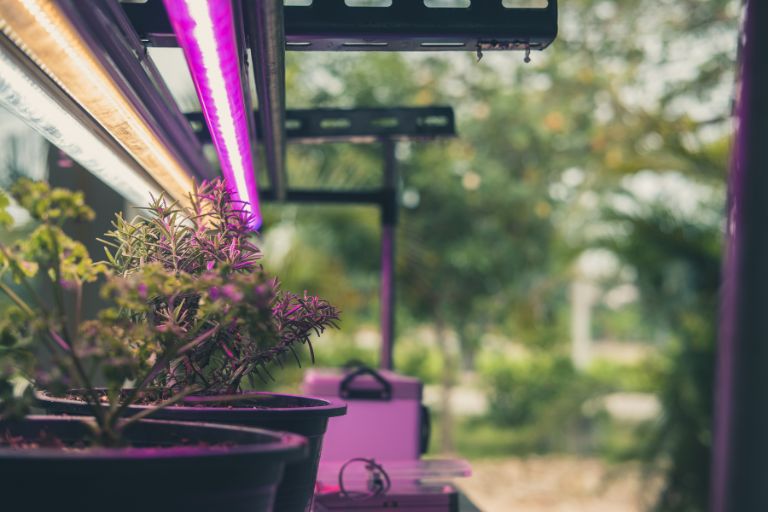
Implement Pest Control Measures
Plants grown in a greenhouse are susceptible to a variety of pests and diseases that can affect their health and productivity if left unchecked. Common pests that can infest garage gardens include aphids, spider mites, whiteflies, mealybugs and thrips. These pests feed on plant sap, causing damage to foliage, flowers and fruit, and can transmit viral diseases between plants. In addition, fungal diseases such as powdery mildew, downy mildew and botrytis can thrive in the humid environment of a garage garden, causing leaf discolouration, wilting and rot.
Preventing and managing pest infestations in garage gardens requires a proactive approach and a combination of preventative measures and control strategies. One effective method is to use natural repellents and deterrents to discourage pests from attacking plants. Common natural repellents include neem oil, garlic spray, insecticidal soaps and horticultural oils, which can be applied to plants to repel or suffocate pests. In addition, introducing beneficial insects such as ladybirds, lacewings and predatory mites can help control pest populations by preying on pests or their eggs.
Cultural practices such as crop rotation, companion planting and maintaining plant hygiene can also help prevent pest infestations in home gardens. Annual crop rotation helps to disrupt pest life cycles and reduce the build-up of pest populations in the soil. Companion planting involves growing pest-resistant plants next to susceptible crops to naturally deter pests. In addition, removing and disposing of infested plant debris, weeds and leaves can eliminate pest breeding sites and reduce the spread of disease.
Regular inspections are essential for the early detection of pest infestations and diseases, allowing timely intervention before they escalate. You should inspect plants thoroughly, looking at the undersides of leaves, stems and the soil surface for signs of pests or disease symptoms. Common signs of pest infestation include spotting, leaf curling, honeydew secretion and distorted growth, while fungal diseases often appear as powdery or fuzzy growth on plant surfaces.
Early intervention is the key to minimising damage and preventing pest and disease outbreaks from spreading throughout the garage garden. When pest or disease symptoms are detected, you should take immediate action to control and manage the problem. This may include removing and isolating affected plants, pruning diseased or infested plant parts and applying appropriate treatments such as natural repellents, biological controls or organic fungicides.
Fertilise Appropriately
Fertilisers play a vital role in providing essential nutrients for plant growth, development and overall health. Plants require a variety of nutrients to carry out various physiological processes, including photosynthesis, cell division and enzyme activation. While many of these nutrients are naturally present in the soil, they can become depleted over time, especially in container gardening where plants rely solely on the nutrients provided in the growing medium.
Fertilisers supplement the nutrient supply in the soil or growing medium, ensuring that plants have access to the essential elements they need for optimal growth and productivity. These essential nutrients can be broadly categorised as macronutrients and micronutrients. Macronutrients, including nitrogen (N), phosphorus (P) and potassium (K), are required in relatively large quantities and play a critical role in plant growth and development. Micronutrients such as iron (Fe), manganese (Mn) and zinc (Zn) are needed in smaller quantities but are also essential for various biochemical processes in plants.
Organic fertilisers and slow-release fertilisers are particularly suitable for container gardening because they provide a steady supply of nutrients over an extended period, reducing the risk of nutrient leaching and ensuring consistent plant nutrition. Organic fertilisers are derived from natural sources such as compost, manure, bone meal or fish emulsion. They release nutrients gradually as they decompose, enriching the soil and promoting long-term soil health. Slow-release fertilisers, on the other hand, are formulated to release nutrients slowly over time, providing a sustained source of plant nutrition without the need for frequent applications.
When fertilising in container gardening, it’s important to follow guidelines that take into account plant needs and growth stages. Different plants have different nutrient needs at different stages of growth and over-fertilising can lead to nutrient imbalances, salt build-up in the soil and plant damage. In general, it’s best to use fertiliser sparingly and monitor plant response to avoid over-fertilising.
For established plants, a general guideline is to lightly feed every 4-6 weeks during the growing season with a balanced fertilizer containing equal parts of nitrogen, phosphorus and potassium (e.g. 10-10-10). Slow release fertilisers can be incorporated into the soil at the beginning of the growing season or applied as a top dressing around the base of the plant. Follow package instructions for specific application rates and methods.
During periods of active growth, such as flowering or fruiting, plants may benefit from additional fertiliser applications to meet their increased nutrient requirements. However, be careful not to over-fertilise as excessive nutrient levels can lead to nutrient toxicity and other problems. Always water plants thoroughly after fertilising to ensure proper nutrient uptake and to prevent root burn.
Prune and Support Plants
Pruning is a fundamental gardening practice that promotes healthy growth, enhances plant vigour and prevents overcrowding. By selectively removing dead, damaged or overgrown plant parts, you can improve airflow, light penetration and overall plant structure, resulting in better yields, disease resistance and aesthetic appeal. Pruning is especially important in container gardening, where space is limited and plants can become crowded or compete for resources.
Pruning instructions vary depending on the type of plant being grown, including herbs, vegetables and flowers. Herbs such as basil, mint and rosemary benefit from regular pruning to encourage bushier growth and extend the harvest season. To prune herbs, regularly pinch off the tips of the stems to encourage branching and discourage leggy growth. Remove yellowing or dead leaves to maintain plant health and appearance.
Vegetables such as tomatoes, peppers and cucumbers also benefit from pruning to improve air circulation and fruit production. For indeterminate tomato varieties, remove suckers (side shoots) that appear in the leaf axils to redirect energy to fruit production and prevent overcrowding. Remove diseased or yellowing leaves to prevent the spread of disease and maintain plant vitality. For vining vegetables such as cucumbers and pumpkins, train the vines to grow vertically on trellises or stakes to save space and promote better air circulation.
For flowering plants, pruning will help promote vigorous flowering, extend flowering periods and maintain the shape and size of the plant. Deadhead spent flowers regularly to stimulate new growth and encourage continuous flowering. Remove dead or diseased branches to prevent the spread of disease and maintain plant health. For perennials such as roses and hydrangeas, prune in late winter or early spring to remove old wood, encourage new growth and shape the plant.
In addition to pruning, support structures such as stakes or trellises are essential for taller or vining plants. Supporting structures help prevent plants from sprawling on the ground, reduce the risk of damage from wind or heavy rain and promote better air circulation around the plant. For vining plants such as peas, beans and cucumbers, install trellises or A-frame supports to guide their growth upwards and maximise vertical space.
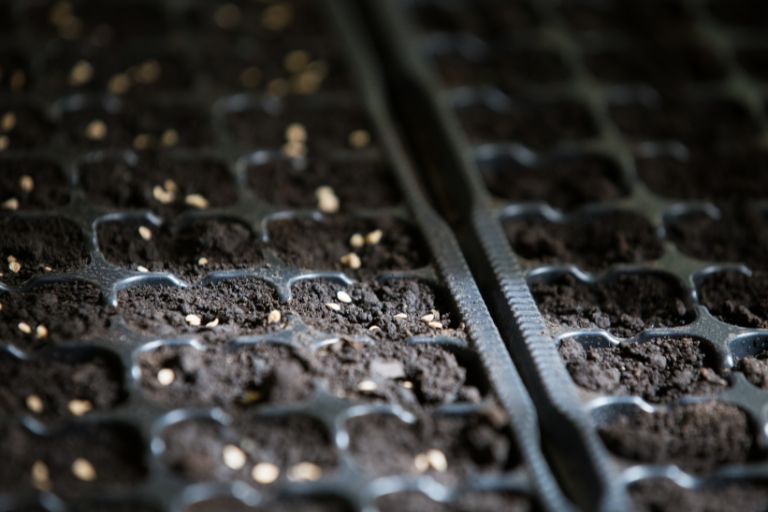
Monitor Plant Health
Regular plant monitoring is essential to maintain plant health and address any problems that may arise. By paying close attention to your plants, you can spot signs of stress, disease or nutrient deficiencies early and take corrective action to prevent further damage.
One of the most common problems you can face is pest infestation. Look for unusual spots, holes or discolouration on leaves, as well as the presence of insects such as aphids, spider mites or whiteflies. If you see signs of pests, take immediate action to control them. This may involve using natural repellents, introducing beneficial insects or physically removing the pests from the affected plants.
Disease is another concern in gardening, especially in environments with limited airflow such as a garage. Look for symptoms such as wilting, yellowing or curling leaves, and unusual growths or spots on the plant. Fungal diseases such as powdery mildew and downy mildew are common in damp conditions, so ensure proper ventilation and avoid overhead watering to minimise the risk of disease. If you suspect a plant is diseased, remove and dispose of the affected parts immediately to prevent the spread of infection.
Nutrient deficiencies can also affect plant health and growth. Monitor your plants for symptoms such as yellowing or discoloured leaves, stunted growth or poor fruit development, which may indicate a lack of essential nutrients. Test your soil regularly to check nutrient levels and pH, and amend the soil as necessary to provide the nutrients needed for plant growth. Consider using organic or slow-release fertilisers to provide a steady supply of nutrients over time.
In addition to pest, disease and nutrient issues, environmental factors such as temperature, humidity and light levels can also affect plant health. Keep track of these factors and adjust your gardening practices accordingly to create optimal growing conditions for your plants. Provide shade or shelter in hot weather, increase ventilation to reduce humidity and adjust lighting as needed to ensure plants receive enough light for photosynthesis.
Stay Organized and Flexible
Staying organised is essential for success in garage gardening, where space is limited and environmental conditions can vary. Keeping track of planting schedules, maintenance tasks and inventory of supplies can help you make efficient use of space and resources, resulting in healthier plants and better yields. Create a gardening calendar or journal to record planting dates, watering schedules and fertiliser routines. Use this tool to plan ahead, anticipate upcoming tasks and stay on top of garden maintenance.
But it’s also important to remain flexible and adaptable in your gardening practices. Each plant is unique, with its own needs and preferences. Pay attention to individual plant requirements, such as light, water and nutrient needs, and be prepared to adjust your maintenance routine accordingly. Keep an eye out for signs of stress or disease and be proactive in dealing with any problems that arise. Flexibility allows you to respond to changing environmental conditions, such as fluctuations in temperature, humidity or sunlight, to ensure optimal growing conditions for plants.
Despite the challenges, garage gardening offers many rewards and satisfactions. There’s a special joy in seeing plants thrive and flourish in a limited space, defying the constraints of their environment. Witnessing the growth and development of plants from seed to harvest is incredibly gratifying and reminds you of the wonder of nature and their role in nurturing life. Whether it’s harvesting fresh herbs for cooking, picking ripe tomatoes for salads or admiring the beauty of blooming flowers, garage gardening provides a sense of connection to the natural world and a source of pride in one’s achievements.
Garage gardening also provides a creative outlet for self-expression and experimentation. Designing and organising a garage garden allows you to exercise their creativity and ingenuity, transforming an ordinary space into a thriving oasis of greenery. Whether it’s arranging plants in aesthetically pleasing patterns, experimenting with different planting techniques or incorporating decorative elements, garage gardening offers endless opportunities for personalisation and artistic expression.
Successful garage gardening revolves around maximising space, optimising environmental conditions and caring for plants properly. Key tips include selecting appropriate containers and plants, providing adequate lighting and ventilation, maintaining consistent temperature and humidity levels, watering plants appropriately, monitoring for pests and diseases, and providing support structures where necessary. You can transform their garage spaces into thriving gardens by following these guidelines and adapting them to their individual circumstances.
With careful planning, attention to detail and adaptability, garage gardening can produce bountiful harvests, beautiful blooms and a sense of achievement. Embrace the challenges and opportunities of garage gardening and enjoy the satisfaction of creating life in a small space.
Garage gardening offers many benefits, including maximising space, providing shelter from the elements and improving accessibility for gardeners of all abilities. Beyond the practical benefits, garage gardening fosters a deeper connection with nature and a sense of pride in one’s gardening achievements. Whether it’s harvesting fresh produce, enjoying aromatic herbs or admiring colourful flowers, garage gardening offers a fulfilling and rewarding experience that brings joy and satisfaction to you.
